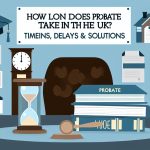Table of Contents

Key Takeaways
- Inheritance Tax (IHT) in the UK is charged at 40% on estates over the £325,000 threshold.
- Charitable trusts can significantly reduce your IHT liability, sometimes lowering the rate to 36%.
- Understanding the nil-rate band and residence nil-rate band can lead to substantial estate tax savings.
- Gifts and exemptions are key strategies in inheritance tax planning, including potentially exempt transfers (PETs).
- Seeking professional advice and regularly reviewing your estate plan ensures your beneficiaries are well-guided.
Unlocking the Mysteries of UK Inheritance Tax
Let’s dive into what Inheritance Tax really is. Imagine you’ve worked hard all your life, and you’ve built up a nice little nest egg. When the time comes, and you’re no longer here, the government steps in and takes a piece of what you’ve left behind, that’s Inheritance Tax. It’s like a final farewell tax on everything you own – your house, savings, investments, even your car. But here’s the kicker, if your estate is worth less than £325,000, you don’t have to pay a penny in IHT. That’s what we call the ‘nil-rate band’.
What is Inheritance Tax?
Think of Inheritance Tax as a departure charge on your estate. It’s due when someone passes away and leaves behind more than the exempt amount. It’s not just about money in the bank; it includes property, possessions, and even some gifts you may have given in the last seven years. It’s a tax that can take a big bite out of what you leave for your loved ones, which is why planning is crucial.
Who Needs to Pay It?
So, who has to pay this tax? Well, it’s not the person who has passed away, but their estate. If you’re named as the executor, that’s the person responsible for sorting out the estate, then you’ve got the job of settling the IHT bill. It can feel daunting, but don’t worry, with a bit of know-how, you can navigate through it.
How Can Planning Help?
Now you might be thinking, “How can I make sure my family gets the most of what I leave behind?” That’s where planning comes into play. By understanding the rules and using them to your advantage, you can protect your estate from a hefty tax bill. It’s all about being smart with your money, even after you’re gone.
The Power of Charitable Trusts
One of the smartest moves you can make is to set up a charitable trust. Not only do you get to support a cause close to your heart, but you also get to lighten the IHT load on your estate. It’s a win-win!
Defining Charitable Trusts
A charitable trust is like a treasure chest for a good cause. You put assets into it – could be money, stocks, even property – and you get to say how it’s used to help others. The best part? The value of what you put in is knocked off your estate value when it comes to calculating IHT.
How Charitable Trusts Can Lower Inheritance Tax
Here’s the magic: if you leave at least 10% of your ‘net estate’ to charity, the tax man cuts the IHT rate from 40% to 36% on the rest. That’s a pretty sweet deal for your beneficiaries and the charities you care about.
Understanding the Nil-Rate Band
The nil-rate band is your golden ticket in inheritance tax planning. It’s the amount up to which your estate doesn’t owe a penny in Inheritance Tax. For the 2024 tax year, this sits at £325,000. But wait, there’s more – if you’re passing on your home to your kids or grandkids, you might qualify for an extra boost called the residence nil-rate band, which can add another £175,000 to your nil-rate band. That’s a total of £500,000 that could escape the tax net!
Remember, the nil-rate band is not a ‘use it or lose it’ deal. If you’re married or in a civil partnership, any unused portion can be transferred to your spouse or partner when you die. This means couples can potentially have a combined threshold of up to £1 million. Now, isn’t that something to think about?
Leveraging Gifts and Annual Exemptions
Gifts are a bit like secret passageways that can help you move money out of your estate tax-free. You can give away £3,000 each year without it counting towards your estate for IHT purposes – we call this the ‘annual exemption’. But that’s not all. You can also give small gifts of up to £250 per person and even make larger gifts that will become exempt if you live for seven more years after making them. These are known as potentially exempt transfers, or PETs for short.
Let’s not forget about wedding gifts – you can give away certain amounts on the occasion of a wedding or civil partnership without it adding to your IHT bill. For example, parents can give £5,000, grandparents £2,500, and anyone else £1,000. Isn’t it nice to celebrate love while being tax-savvy?
Now, if you’re feeling particularly generous, any amount of money you give away out of your regular income that doesn’t affect your standard of living is also exempt from IHT. So go ahead, treat your grandkids, support a family member, or donate to charity – it’s all good for your heart and your tax planning.
| Aspect | Details |
| Definition | A Charitable Trust is a legal arrangement where assets are donated to a charity, and the donor receives various tax benefits. |
| Primary Purpose | To support charitable causes while providing tax benefits to the donor and the donor’s estate. |
| Tax Benefits | – Income Tax Deduction: Donors can receive a tax deduction for the value of the assets contributed to the trust. – Estate Tax Reduction: Assets placed in a Charitable Trust are removed from the donor’s taxable estate, potentially lowering estate taxes. |
| Types of Charitable Trusts | – Charitable Remainder Trust (CRT): Provides income to the donor or other beneficiaries for a set period, after which the remaining assets go to charity. – Charitable Lead Trust (CLT): Provides income to a charity for a set period, after which the remaining assets go to other beneficiaries (e.g., family members). |
| Advantages | – Reduces estate size and thus estate taxes. – Provides lifetime income to the donor or other beneficiaries. – Fulfills philanthropic goals. – Potentially reduces capital gains tax on appreciated assets. |
| Considerations | – Requires careful planning and legal setup. – Irrevocable, meaning once assets are placed in the trust, they cannot be taken back. – Trust administration costs. |
| Legal Requirements | Must comply with IRS regulations and specific legal requirements to qualify for tax benefits. This often involves detailed trust documents and regular filings. |
| Ideal For | Individuals with significant estates who are looking to reduce their taxable estate, support charitable causes, and potentially receive income during their lifetime. |
Proven Tips for Savvy Inheritance Tax Planning
When it comes to protecting your estate, knowledge is power. Besides the nil-rate band and gifts, there are other strategies you should have up your sleeve. For instance, investments in certain types of shares that qualify for Business Relief could be 100% exempt from IHT. And if you own a business, there are reliefs that might apply there too. It’s all about putting your money where the taxman can’t reach it.
Another smart move is to consider how your savings and investments are held. Individual Savings Accounts (ISAs) might be tax-free while you’re alive, but they’re not exempt from IHT. Switching to investments that offer IHT benefits could be a game-changer for your estate.
UtiliSing Life Insurance Policies
Life insurance can be a real hero when it comes to inheritance tax planning. If you set up a policy to pay out on your death, and write it in trust, the payout doesn’t form part of your estate and won’t be subject to IHT. It’s like creating a pot of money that’s solely for your loved ones, without the taxman getting his hands on it. Plus, it can help cover any IHT bill, so your family doesn’t have to worry about selling assets to pay the tax.
Investing in Tax-Efficient Options
Investments are a bit like different flavors of ice cream – there’s one for every taste, and some are more tax-efficient than others. For example, certain investments qualify for Business Property Relief and can be passed on free of IHT after two years. That’s right, just two years! It’s worth exploring options like the Enterprise Investment Scheme (EIS) or Seed Enterprise Investment Scheme (SEIS), which can offer both income tax relief and IHT benefits.
Making the Most of Pensions
Pensions are not just for retirement – they can be powerful tools in inheritance tax planning too. Most pensions fall outside your estate for IHT purposes, so they can be passed on tax-free to your beneficiaries. And with the right type of pension, you can even pass it on as a tax-free lump sum if you die before the age of 75. It’s a smart way to save for the future and protect your loved ones from a hefty tax bill.
Implementing Your Strategy
“The best time to plant a tree was 20 years ago. The second best time is now.” This Chinese proverb rings especially true for inheritance tax planning. Start early, and you’ll have more options to save on taxes and secure your legacy.
Putting all these tips into action requires a solid plan. Start by taking stock of your assets and think about how you want them to be distributed. Then, consider how each part of your estate could be affected by IHT and what strategies you can use to minimize the impact.
It’s also a good idea to talk to your family about your plans. They should understand your intentions and know where to find important documents. Communication can prevent misunderstandings and ensure that your wishes are carried out smoothly.
Most importantly, don’t forget to keep your will up to date. It’s the roadmap that guides your executors and beneficiaries, so make sure it reflects your current wishes and circumstances. A will that’s out of date can lead to all sorts of complications and might not make the most of the IHT-saving opportunities available to you.
And remember, the rules around IHT can change, so it’s vital to stay informed. Tax laws and allowances are updated regularly, and what worked a few years ago might not be the best approach today.
Getting Professional Advice
While there’s a lot you can do on your own, sometimes you need a guide to help you navigate the complex world of inheritance tax planning. A financial advisor or tax specialist can provide personalized advice based on your unique situation. They can help you understand the nuances of the law, explore all the options available to you, and implement a plan that maximizes your estate’s value for your beneficiaries.
Regular Review of Your Estate Plan
Just like you wouldn’t set sail without checking the weather, you shouldn’t leave your estate plan to gather dust. Life changes – marriages, divorces, births, deaths – they all can affect your plan. That’s why it’s crucial to review your estate plan at least every five years, or whenever there’s a significant change in your life or the tax laws. This way, you can ensure that your plan still fits your needs and takes advantage of the latest tax-saving opportunities.
Regular Review of Your Estate Plan
Think of your estate plan as a living document. It’s something that needs to breathe, change, and grow as your life does. You’ve got kids? Check your plan. Bought a new house? Check your plan. The point is, as your situation evolves, so should your estate plan. This isn’t a one-and-done deal; it’s an ongoing process to make sure your wishes are clear and your loved ones are protected. Regular reviews ensure that your plan is always in line with the latest laws and your current wishes.
FAQ
What is a Nil-Rate Band?
The nil-rate band is the value of your estate that is not subject to Inheritance Tax in the UK.
For the 2024 tax year, the nil-rate band is £325,000.
Anything above this threshold is taxed at 40%, unless you leave at least 10% to charity, which can reduce the rate to 36%.
The residence nil-rate band is an additional allowance when you leave your main residence to direct descendants, potentially increasing the threshold to £500,000.
The nil-rate band is a bit like a tax-free allowance for your estate. It’s the portion of your estate that can pass on without attracting Inheritance Tax. For most individuals, this means you can leave up to £325,000 without worrying about the taxman taking a cut. But if your estate is worth more, that’s when you need to start thinking about planning to keep as much as possible in the family.
Can I Reduce My Inheritance Tax Bill by Making Gifts?
Absolutely! Giving gifts can be a great way to reduce your Inheritance Tax bill. You see, if you give a gift and then live for another seven years, that gift is usually outside of your estate for Inheritance Tax purposes. And don’t forget about the annual exemption of £3,000, small gifts of £250, and wedding gifts – they all count and can help reduce the size of your taxable estate. Just remember, it’s important to keep records of what you’ve given, to whom, and when.
Are Life Insurance Payouts Taxable for Inheritance Tax?
Life insurance payouts can be a bit of a grey area when it comes to Inheritance Tax. If the policy is not written in trust, the payout may form part of your estate and could be taxable. However, if you write the policy in trust, the payout usually won’t count towards your estate value and should escape Inheritance Tax. It’s a simple step you can take when setting up your policy that can save your family a lot of hassle and expense down the line.
What Types of Trusts are Available for Inheritance Tax Planning?
Bare Trusts: Simple and straightforward, the beneficiaries are entitled to the trust assets at 18.
Interest in Possession Trusts: Beneficiaries can get income from the trust right away, but might not have rights to the trust assets.
Discretionary Trusts: Trustees have the power to make decisions about how to use the trust income, and sometimes the capital.
Accumulation Trusts: Income can be reinvested into the trust to increase its value.
Settlor-Interested Trusts: The settlor or their family can benefit from the trust during the settlor’s lifetime.
Choosing the right trust depends on your goals, whether it’s to control when and how beneficiaries receive their inheritance, protect assets from creditors, or save on taxes. It’s a complex area, and professional advice is key.
How Often Should I Review My Inheritance Tax Plan?
Life is full of surprises, and your Inheritance Tax plan should be able to handle them. Reviewing your plan every five years is a good rule of thumb, but also after major life events like marriage, divorce, the birth of a child, or the purchase of a new home. Changes in tax laws should also trigger a review. This way, you can ensure your plan is always up to date and as tax-efficient as possible, securing the most for your beneficiaries.






